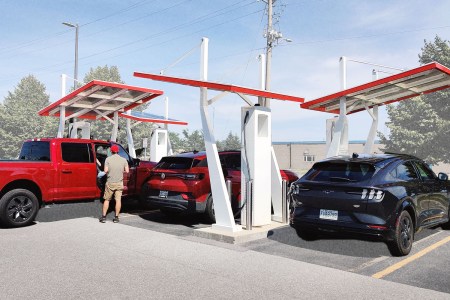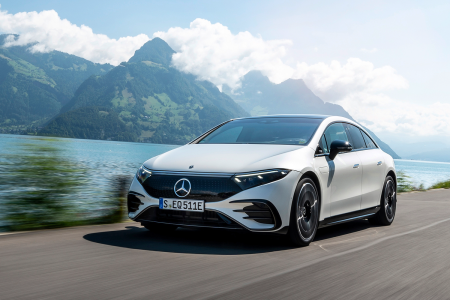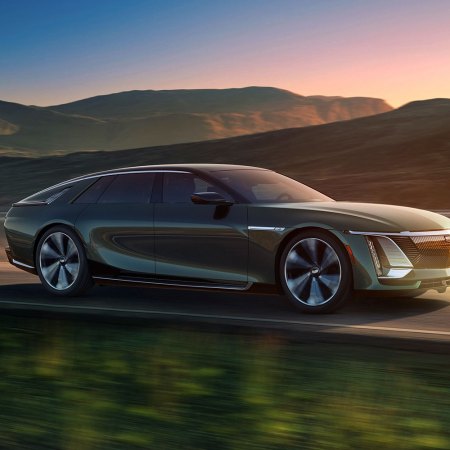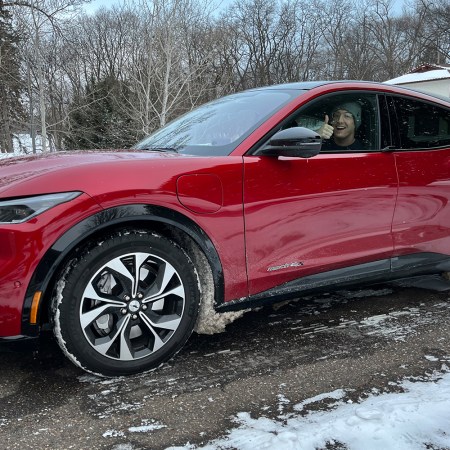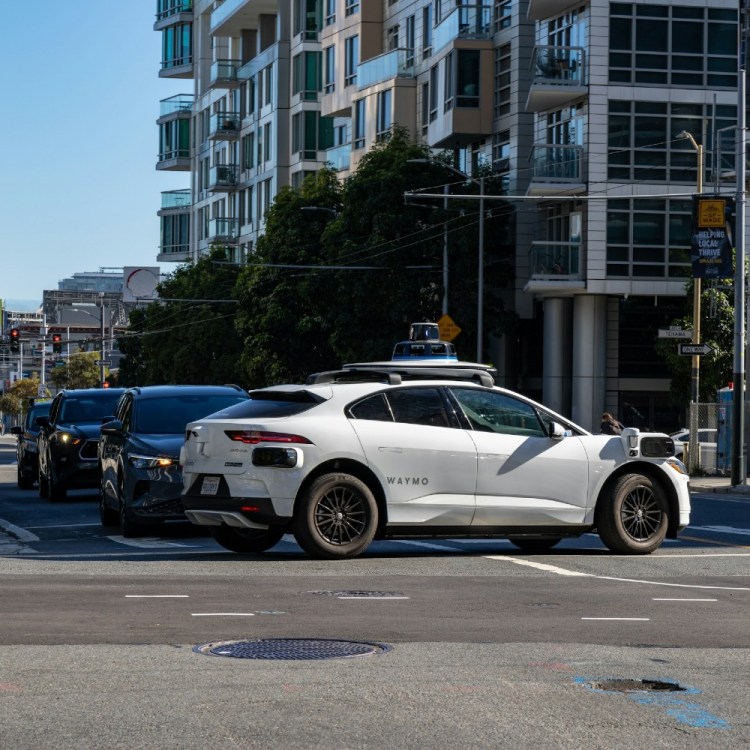I’ve been test driving electric cars and plug-in hybrids for nearly a decade now, but in that time I’ve always had to rely on either public charging infrastructure, or the admittedly feeble efforts of the wall socket in my garage by snaking an extension cord under the door to my parking spot.
Neither situation is ideal. By relying on 110 volts of household current, it takes days to top-up the large batteries found in modern EVs, and while Montreal offers relatively robust access to public charging stations (including a few just blocks from my home), there are trade-offs: You still have to rely on them being in good working order, luck out that someone else isn’t using them, and then not mind walking home and back several hours later to pick up your ride.
When Wallbox approached me about trying out its Pulsar Plus home charging station, I was eager to leave all of those hassles behind. I was also naturally curious about what the process of having a Level 2 charger installed would entail. Would it require any electrical upgrades? How much space would it take up? Were there any safety concerns? Could I connect the unit myself? What kind of maintenance would I be responsible for?
Beyond that, however, I also wanted to see how having unfettered access to a reliable source of electrons would change my perspective on EV ownership. I’d heard from several friends who’d gone the all-electric route that a home charger was a complete game-changer.
They were right.
What Is Level 2 Charging?
Level 2 charging relies on a 240-volt electrical connection, similar to what is used by a large appliance like a clothes dryer or electric furnace. Depending on how many amps the unit is rated for, this translates to between 7-kW and 11-kW of charging power for most home installations (although out in the wild you might see figures as low as 3-kW or as high as 19-kW from a Level 2).
How does that compare to my humble extension cord? A wall outlet can take up to 50 hours to fully charge the average EV battery, while a Level 2 reduces that time substantially to between four and 10 hours (depending on the battery’s size). It’s a substantial upgrade, and one that makes it easy to plug in at night and wake up to 100% charge in the morning for almost every electric vehicle on the market.
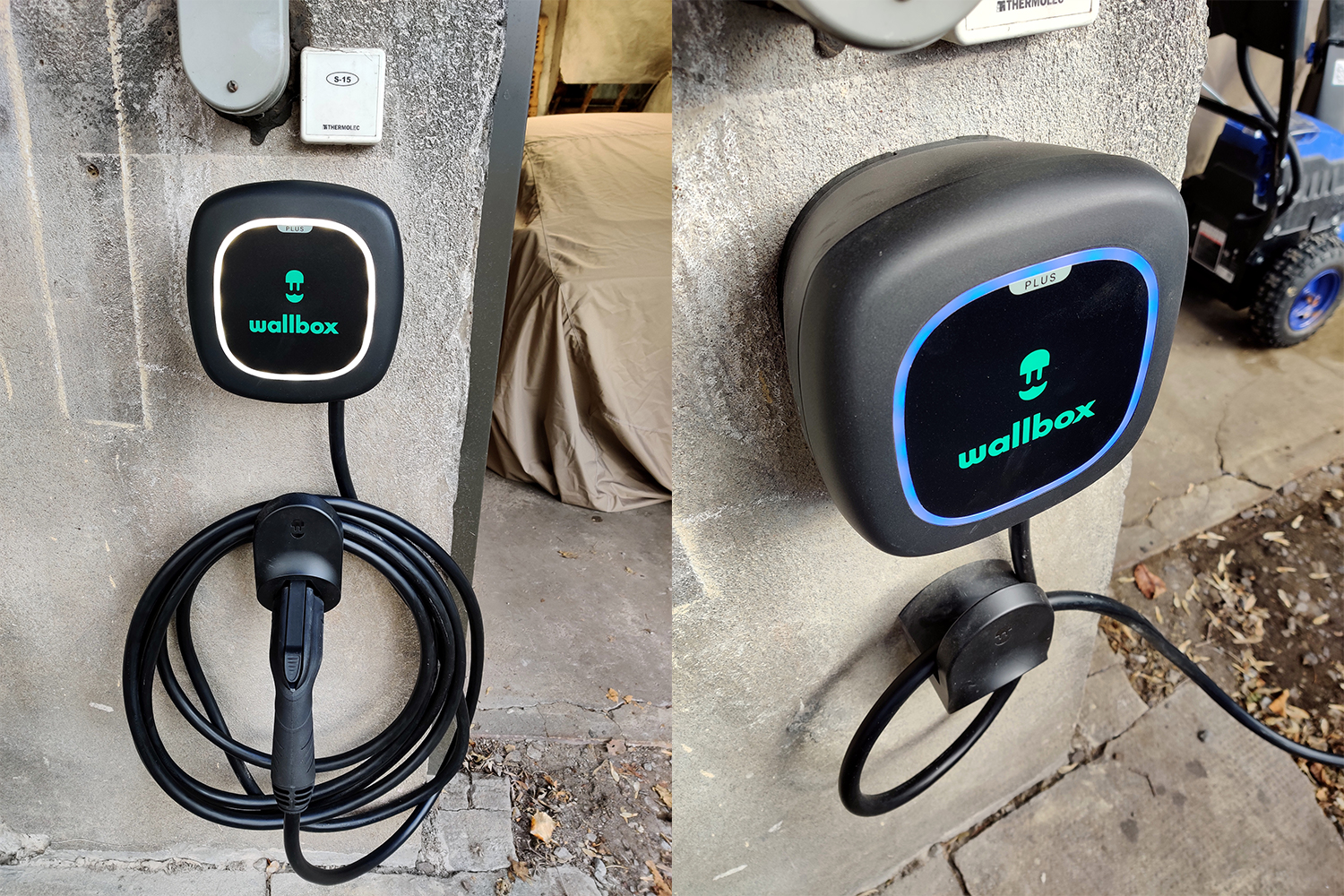
As Simple, Or as Complicated, As You Want It to Be
The Wallbox Pulsar Plus is representative of what most EV owners can expect from an affordable Level 2 home-charging setup, with a number of extras to sweeten the pot. Featuring both Bluetooth and wifi connectivity, the Pulsar Plus also comes with an app and a web interface to monitor and manage the unit. The functionality ranges from basic scorekeeping (how much energy is being consumed, how much a given charge is costing you), to scheduling (allowing owners to take advantage of less expensive daytime or nighttime rates), to security (locking out the charger so strangers don’t plug in while you’re away), to electrical management (manual control over how many amps the charger is providing to the vehicle plugged into it).
It also steps up with features not found on many, if any, of its competitors, that allow you to easily share a single power source across multiple chargers and users. If you have a many-EV household, you can designate specific chargers to have priority over others, giving you full discretion over how much juice is sucked down by each vehicle. This is particularly useful for anyone who lives in a multi-unit building and is looking to do a group-buy to outfit a parking garage. You can also create multiple user accounts and give them specific permissions to interact with the charger using the Wallbox app and the myWallbox online portal.
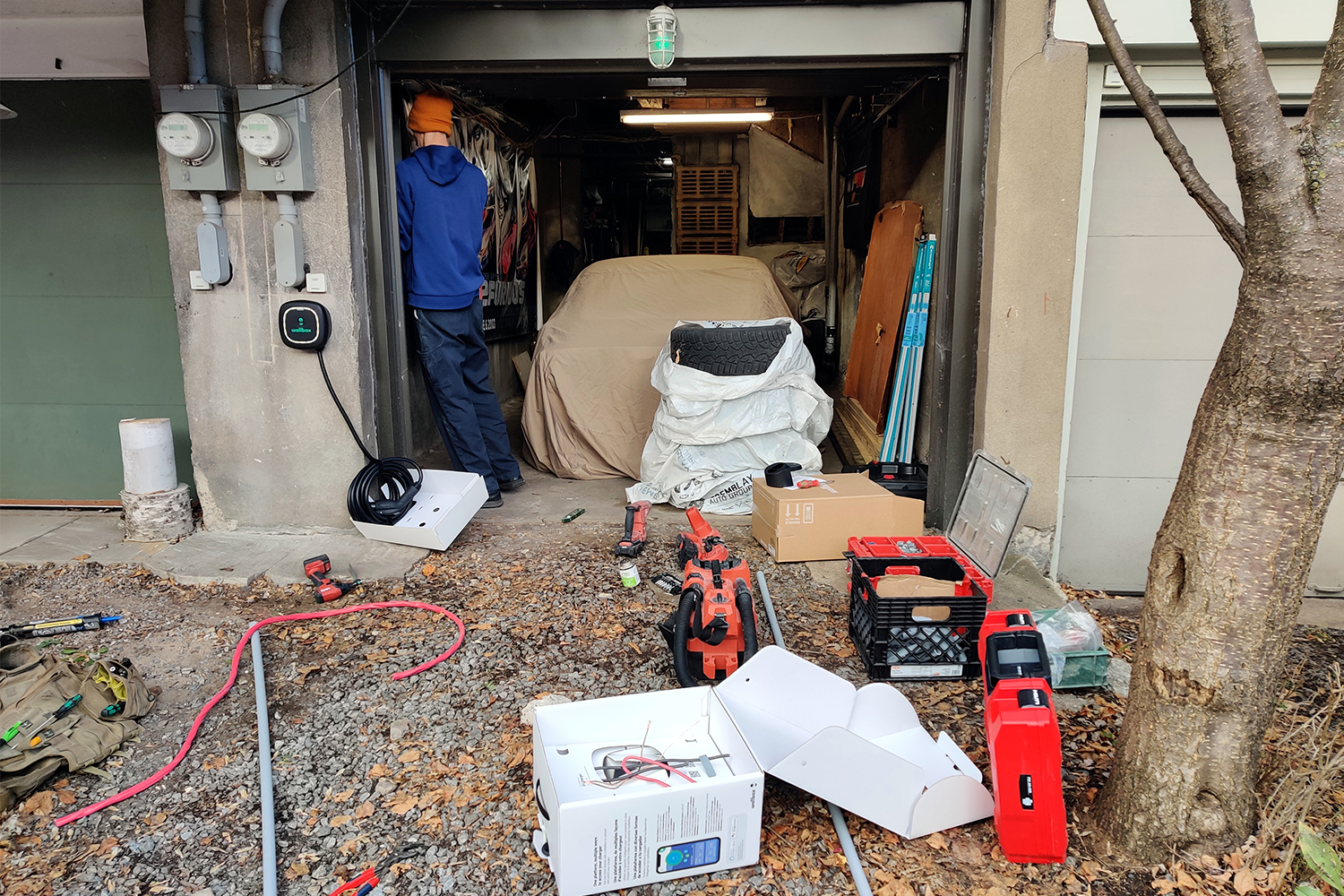
Reconfiguring My Installation Expectations
There are two Pulsar Plus models available — one rated at 40 amps, and another rated at 48 amps — with important distinctions between the two that can complicate the installation process. While the 48-amp edition does provide a higher rate of charge, it’s only available in a hardwired version. The 40-amp version, which is the model I tested, allows you to either hardwire the unit to your house, or instead use a NEMA plug (similar to how you’d connect a dryer) to maximize portability.
With the inside berth occupied by my Datsun, all the electric cars I drive make use of my exterior parking spot, and so I intended to attach the charger to the outside wall of my garage. I had initially planned on going the NEMA plug route, reasoning that I could place the plug on the inside of my garage and run the cable through the concrete wall. This is the type of installation that many buyers might also initially gravitate to, given the likely presence of an existing 240-volt plug somewhere in their basement or garage area.
I Took an 800-Mile Road Trip in an Electric SUV to See What All the Fuss Is About
It was a route I’ve driven many times before, but now I was driving a Ford Mustang Mach-EWhen the electrician arrived, however, we had a conversation that quickly changed my mind. It turns out that there are a number of factors that worked against my NEMA plans. Some of these were specific to my situation. First, I had to respect the electrical code that forbade running any kind of high-powered cable through an outside wall to an inside plug. The reasoning behind the law is that, in the event of a fire, first responders need to be able to quickly disconnect high load electrical equipment (not just EV chargers, but heat pumps and air conditioning units, too).
With that plan quashed, he offered two alternatives: keep the NEMA plug and the charger inside and run the thick charging cable under the garage door when I was using it, or mount the plug on the outside of the garage just beside the Pulsar Plus. The first was a non-starter, as I had no wish to invite critters, snow or rain into my garage through the bulging gap the cable would create. The second was also unappealing, as it would push the Pulsar Plus charger onto my neighbor’s side of the shared garage wall, and even with its very small footprint, make it difficult for them to install their own unit in the near future (they had recently ordered a plug-in hybrid). The electrician also cautioned that it would make the Wallbox extremely easy to steal, as it would be a simple matter of unplugging the cable and undoing a few screws (versus the deterrent posed by cutting through a high-voltage cable).
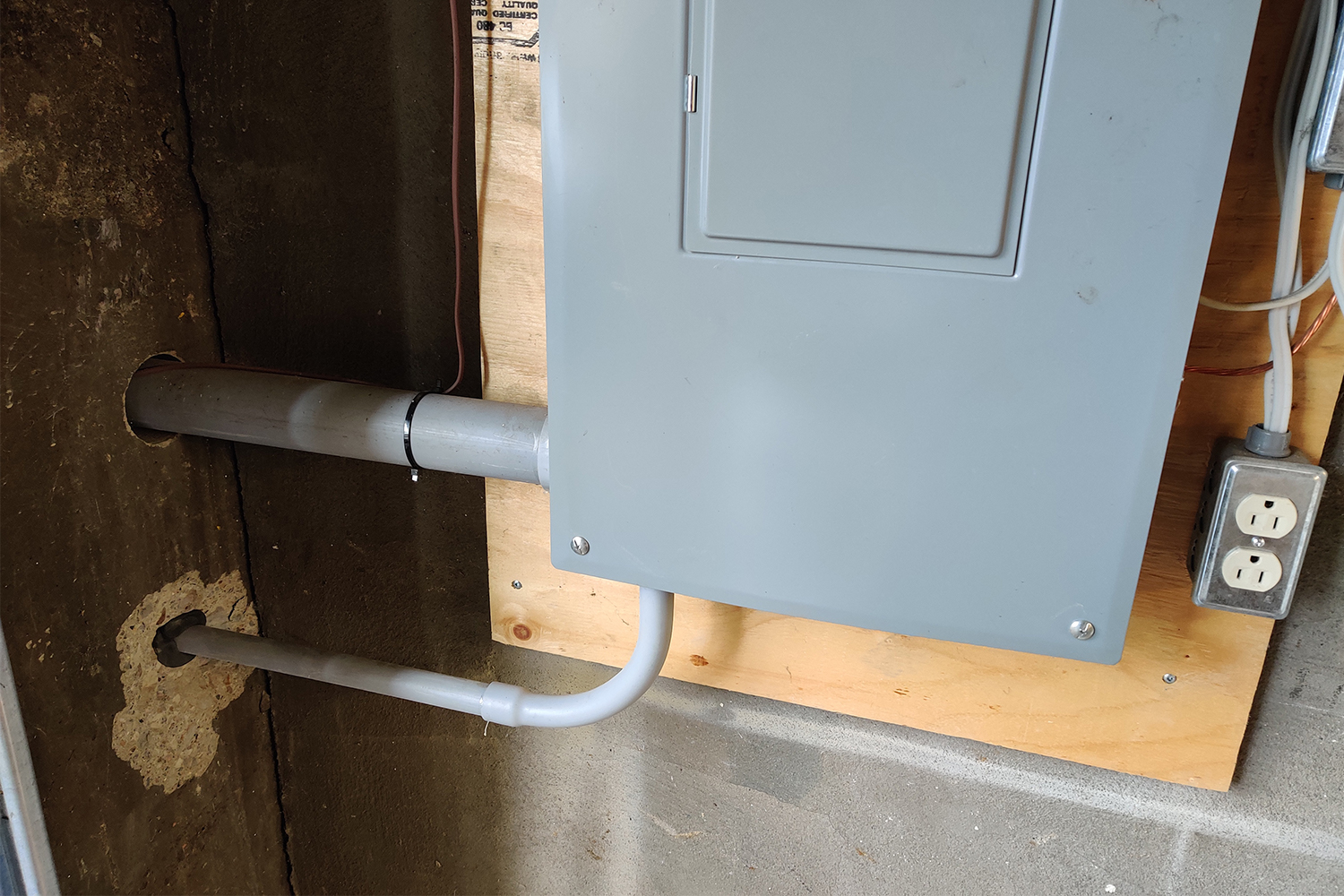
The 80% Solution
With all of that in mind, I went with the hardwired install. This was the cleanest and least complicated option for me to keep the Wallbox unit on the outside and not crowd my neighbor or risk sharing my plug with someone in a more permanent sense.
The wiring was extremely straight-forward. My home is closing in on 100 years in age, but when I bought it a decade ago I had the entire electrical system updated from a 60-amp to a 200-amp entry and panel. Because of the location of the electrical entry from my alley, the panel itself had to be wall-mounted on the inside of my garage near the door, which meant that the electrician was bridging a gap of maybe 18 inches of air and concrete to reach the Wallbox outside. The 200-amp panel also provided ample headroom for adding a 40-amp charger, even with a full electrical heating system and separate AC system in the house.
Of course, a 40-amp rating on the circuit doesn’t translate into a full 40 amps coursing through the cable to the car. Each Wallbox unit features an internal current selector switch that limits output to 80% of the available circuit, which in my case translated to a 32-amp draw. I asked the electrician why this was the case. He explained it’s again a function of electrical code (in both Canada and the United States) to not run a circuit at more than 80% of its capacity for a continuous power draw.
Review: The 2022 Mercedes-Benz EQS 580 Is a Major Electric Gamble
The Silver Star’s least interesting design is also its most importantHe also said that the difference in charging speeds between a 32-amp and a full 40-amp or even 48-amp connection is negligible in the context of how most EVs are charged at home. For example, my setup allowed for 7.6-kW of charging, versus 9.6-kW for the 48-amp version of the Wallbox. This works out to a difference of maybe an hour or two when bringing a very large battery from empty to full, which was largely irrelevant for overnight charging.
Having trained myself for years to look at EV chargers exclusively based on how much power they had to offer, so as to minimize the time spent at a public station, I realized that I now had to change my perspective about what an effective vehicle charging strategy looked like.
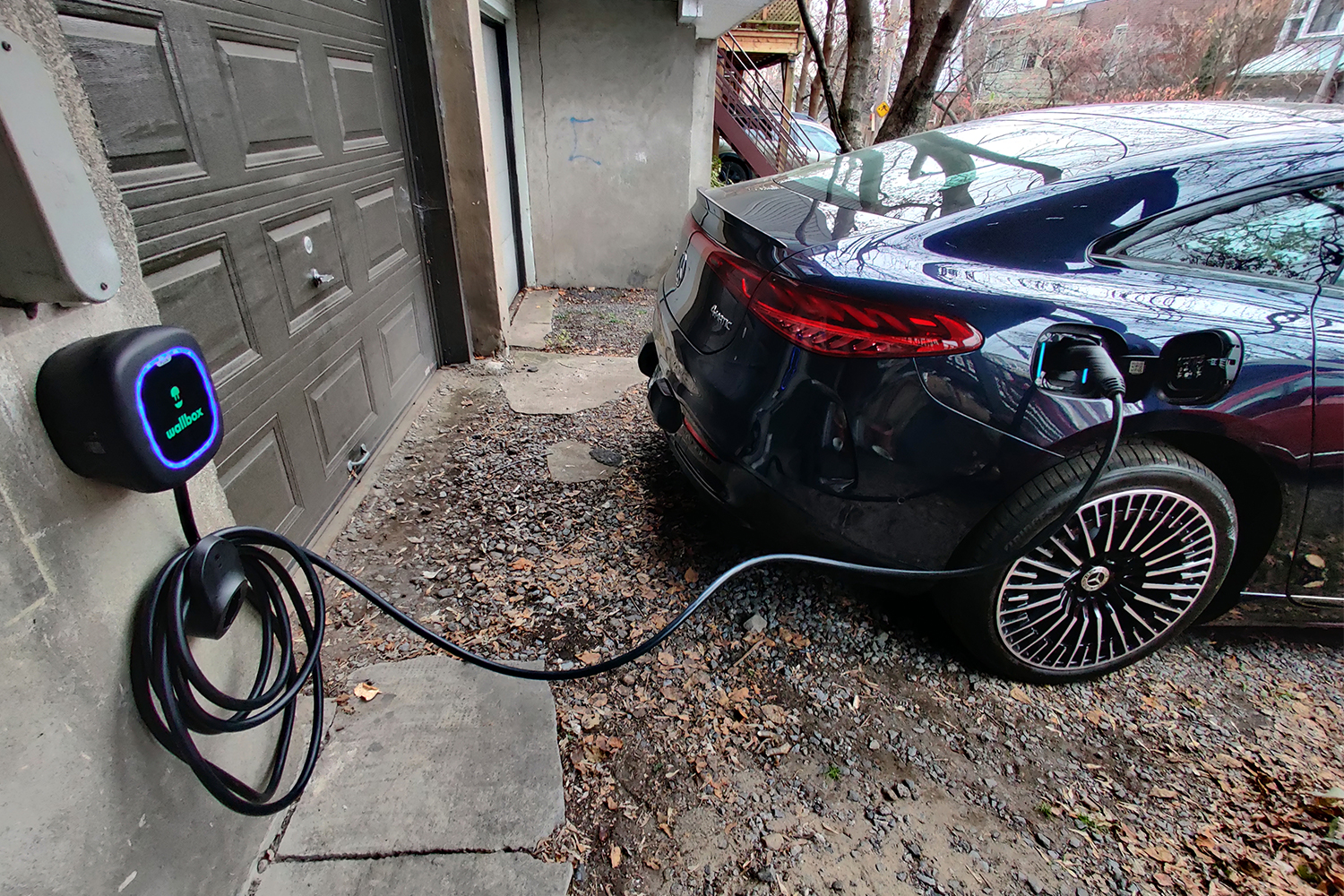
Simple and Affordable Setup
Overall, installing the charger was a simple process that took the experienced electrician (who had more than a thousand similar installs under his belt) roughly three hours. In terms of cost, he told me that my simple setup would run me just $450, which in combination with the $650 retail price of the Pulsar Plus 40A brought the total to $1,100. If your electrical panel is farther away from the charger’s mounting point, he said, the installation bill can climb into the $1,300 range.
Using the charger itself was even easier. To put it bluntly, all that’s needed to top up at home is to unclip the Pulsar Plus charging cable from the mount and stick in a vehicle’s charge port. The system automatically communicates with the vehicle and starts providing power, with the LED lighting on the unit shifting from steady green to pulsing blue (it can also show yellow when locked, or be turned off completely so as not to draw attention to itself). It’s such a simple system that I rarely find myself using the app at all.
The Wallbox’s 25-foot cable makes it a cinch for me to reach the varied port locations of the vehicles I test, and it coils much more easily than I thought it would. So far, I’ve plugged the Pulsar Plus into vehicles as far apart on the EV scale as the entry-level Chevrolet Bolt and the six-figure Mercedes-Benz EQS, and it handled both models with no issues. Charging speeds are excellent, and I can usually count on a full battery in the six-hour range when starting from nearly empty, which is well within expectations.
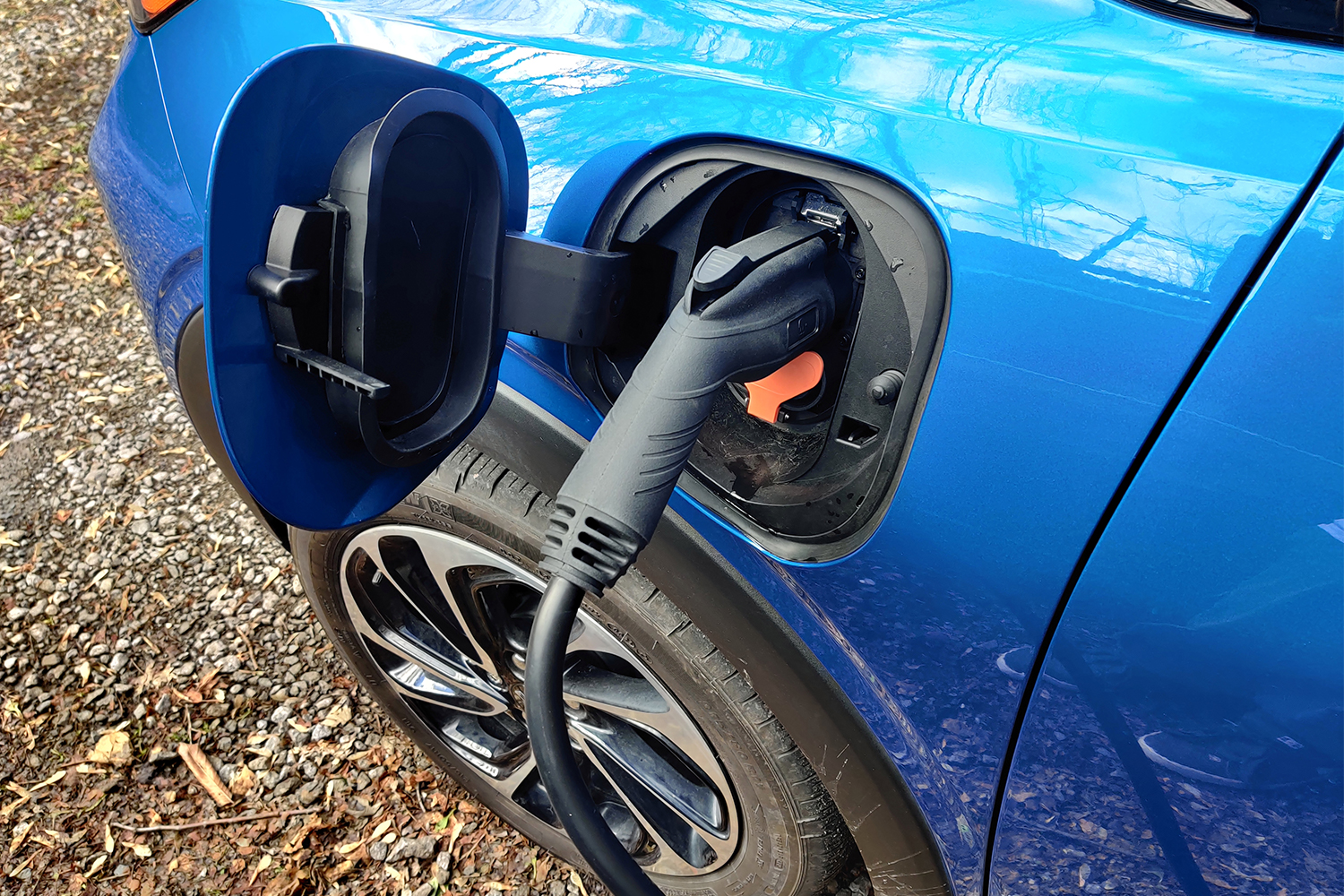
If You Can Charge at Home, You Really Should
Over the past month, I’ve had the Pulsar Plus actively charging for just over 23 hours. Quebec has the cheapest electricity pricing in North America, and for a total of 73.6 kWh of usage I paid $3.23. That covered about 250 miles of driving, for a total cost of about two cents per mile. Using the average cost of electricity in the United States, that works out to about $19 in total costs, or about eight cents per mile. That’s certainly less expensive than paying for service at a public charger, even in the most generous of locales, with the added bonus of not having to wait in line.
Beyond the economic aspect, the convenience of having a home EV charger cannot be overstated. In the past I often meticulously planned out each week of driving with a given electric vehicle, taking into account when I’d have to charge, where I’d be able to plug-in, and monitoring its battery state at all times. With a Level 2 charger attached to my garage, however, I feel like I’ve been freed from the shackles of range anxiety.
Knowing that the battery will be at 100% in the morning allows me to use almost all of a vehicle’s driving range during the day without having to worry about tomorrow. It’s been especially reassuring on road trips: This past weekend, I took the Bolt on a 180-mile round-trip ride that came close to exhausting its power pack in cold weather, something I would have been much more concerned about prior to the arrival of the Wallbox.
One of the best parts of Level 2 ownership is that it’s also virtually worry-free. The Pulsar Plus doesn’t require any specific maintenance, contains no moving parts, and aside from the cable getting stiffer in cold weather, doesn’t seem to mind the changing of the seasons. While I’m curious to see if charging speeds drop once the deep freeze hits this winter, they’ve been remarkably stable over the chilly, damp weeks in November and December.
If you’re considering a Level 2 charger at home, the Wallbox Pulsar Plus is a strong contender — especially if you plan on connecting more than one vehicle, or like tracking and controlling your charging sessions online. Although self-installation is possible, especially if you already have a NEMA plug handy, I recommend hiring an electrician to make sure everything is done properly and to code, for maximum peace of mind. After just over a month of regular use, my only regret is that I waited this long to step up to the Level 2 plate.
This article appeared in an InsideHook newsletter. Sign up for free to get more on travel, wellness, style, drinking, and culture.

